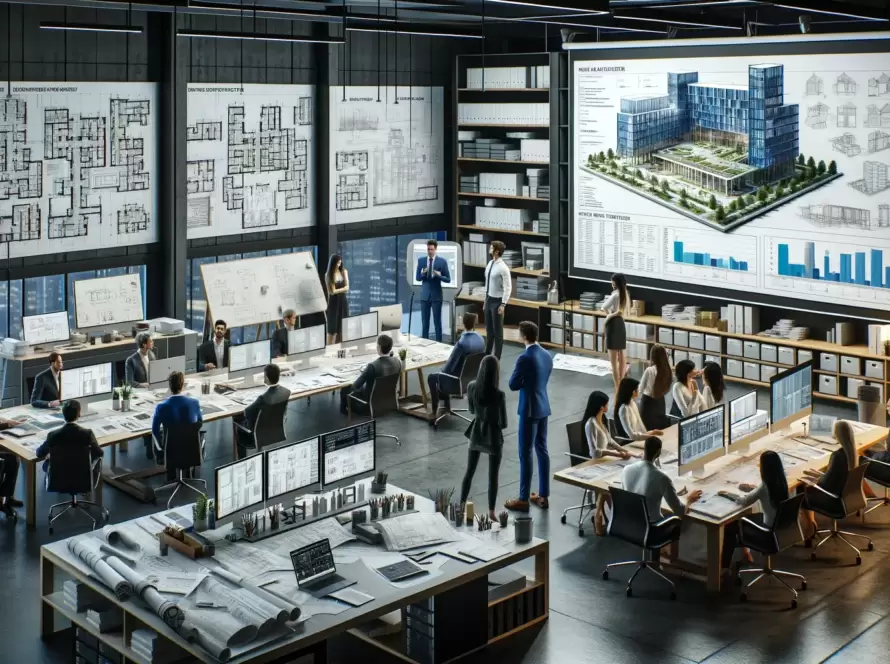
Table of Contents
- Introduction: Rethinking the Boundaries of Landscape Design
- The Evolution of Vertical Landscaping
- Benefits of Vertical Landscapes
- Aesthetic Appeal: Redefining Urban Beauty
- Technological Innovations Driving Vertical Landscaping
- Case Studies: Iconic Vertical Landscapes
- Vertical Landscapes in Residential Settings
- Challenges and Solutions in Vertical Landscaping
- The Future of Vertical Landscapes
- Conclusion: Embracing a Vertical Green Revolution
Introduction: Rethinking the Boundaries of Landscape Design
Landscape design traditionally conjures images of sprawling lawns, expansive gardens, and horizontal expanses adorned with flora. However, as urban spaces become increasingly constrained and architects push the boundaries of innovation, the question arises: can landscape be vertical for unique designs? The answer is a resounding yes. Vertical landscapes not only offer a solution to space limitations but also introduce a novel aesthetic that challenges conventional design paradigms.
The Evolution of Vertical Landscaping
The concept of vertical landscaping isn’t entirely new. Ancient civilizations, such as the Babylonians with their Hanging Gardens, hinted at the possibilities of upward-growing green spaces. However, modern vertical landscapes have evolved far beyond these early iterations, driven by advancements in technology and a growing commitment to sustainability.
Vertical landscapes today leverage cutting-edge materials and irrigation systems, allowing for the creation of lush, green walls that can thrive in a variety of environments. This evolution reflects a broader trend in architecture and design, where the integration of natural elements is increasingly prioritized to enhance urban living spaces.
Benefits of Vertical Landscapes
Maximizing Limited Space
One of the most compelling advantages of vertical landscapes is their ability to maximize limited space. In densely populated urban areas, where horizontal space is at a premium, vertical gardens offer a viable solution. By transforming bare walls into vibrant ecosystems, designers can create green spaces that would otherwise be impossible.
Environmental Impact
Vertical landscapes also have a significant positive impact on the environment. Green walls help to reduce the urban heat island effect, lower energy consumption by insulating buildings, and improve air quality by filtering pollutants. Additionally, they provide habitats for urban wildlife, contributing to biodiversity in cityscapes that are often devoid of natural habitats.
Aesthetic Appeal: Redefining Urban Beauty
Transforming Concrete Jungles
Vertical landscapes have the power to transform the aesthetic of urban environments. Cities often suffer from a lack of greenery, resulting in stark, concrete jungles. By incorporating vertical gardens into the design of buildings, designers can introduce natural beauty into urban settings, creating a more pleasant and inviting atmosphere.
Artistic Expression
Beyond their environmental benefits, vertical landscapes offer unique opportunities for artistic expression. Designers can experiment with various plant species, colors, and textures to create living art installations. These green walls can be customized to reflect the identity of the building or community they adorn, adding a personal and dynamic element to urban architecture.
Technological Innovations Driving Vertical Landscaping
Advanced Irrigation Systems
One of the key technological advancements enabling the success of vertical landscapes is the development of sophisticated irrigation systems. These systems ensure that plants receive the right amount of water and nutrients, regardless of their position on the wall. Automated irrigation reduces maintenance efforts and ensures the longevity of the garden.
Lightweight Materials
Another innovation that has facilitated the rise of vertical landscaping is the use of lightweight, durable materials. These materials can support the growth of plants without imposing excessive weight on building structures. This advancement allows vertical gardens to be installed on a wide range of surfaces, from residential homes to towering skyscrapers.
Case Studies: Iconic Vertical Landscapes
Bosco Verticale, Milan
The Bosco Verticale (Vertical Forest) in Milan is a pioneering example of vertical landscaping. These residential towers are adorned with over 20,000 plants, including trees, shrubs, and flowers, creating a living, breathing facade. The project demonstrates the potential of vertical landscapes to integrate nature into urban living, offering residents a unique and sustainable living environment.
One Central Park, Sydney
Another iconic example is One Central Park in Sydney, which features extensive vertical gardens designed by French botanist Patrick Blanc. The building’s green walls are home to a diverse array of plant species, providing a stunning visual impact while enhancing the building’s environmental performance. This project highlights the synergy between architecture and nature in creating innovative and sustainable urban spaces.


Vertical Landscapes in Residential Settings
Enhancing Small Spaces
Vertical landscapes are not limited to large commercial buildings; they can also be effectively integrated into residential settings. For homeowners with limited outdoor space, vertical gardens provide a means to cultivate greenery and enjoy the benefits of nature. Balconies, patios, and even interior walls can be transformed into lush, green sanctuaries.
Health and Well-being
The presence of greenery in residential spaces has been shown to improve mental health and well-being. Vertical gardens can create a tranquil environment, reduce stress, and promote a sense of relaxation. For urban dwellers, having access to green space, even in a vertical format, can significantly enhance quality of life.
Challenges and Solutions in Vertical Landscaping
Structural Considerations
One of the primary challenges in implementing vertical landscapes is ensuring that the building structure can support the additional weight and moisture. Engineers and architects must carefully assess the load-bearing capacity of walls and incorporate appropriate waterproofing measures to prevent damage.
Maintenance Requirements
Maintaining vertical landscapes can also pose challenges. Regular pruning, pest control, and system checks are necessary to keep the gardens healthy and thriving. However, advancements in technology, such as automated irrigation and fertilization systems, have made maintenance more manageable.
The Future of Vertical Landscapes
Integration with Smart Technology
The future of vertical landscapes lies in their integration with smart technology. Sensors and IoT devices can monitor plant health, soil moisture, and environmental conditions in real-time, allowing for precise and efficient care. This integration will further reduce maintenance efforts and enhance the sustainability of vertical gardens.
Expanding Horizons
As vertical landscaping continues to evolve, we can expect to see its application expand beyond individual buildings to entire urban ecosystems. Green corridors, vertical parks, and interconnected green walls could become commonplace, transforming cities into lush, sustainable environments that prioritize the well-being of their inhabitants.
Conclusion: Embracing a Vertical Green Revolution
Vertical landscapes represent a revolutionary shift in the field of landscape design. By moving beyond the traditional horizontal plane, designers can create innovative, sustainable, and aesthetically pleasing environments that enhance urban living. As technology continues to advance and the benefits of green spaces become increasingly recognized, the adoption of vertical landscaping will likely accelerate, leading to greener, more vibrant cities worldwide.
In conclusion, the potential for vertical landscapes is immense. By embracing this unique approach, we can redefine the relationship between architecture and nature, creating harmonious spaces that inspire and sustain future generations. The green revolution is here, and it’s reaching new heights.


